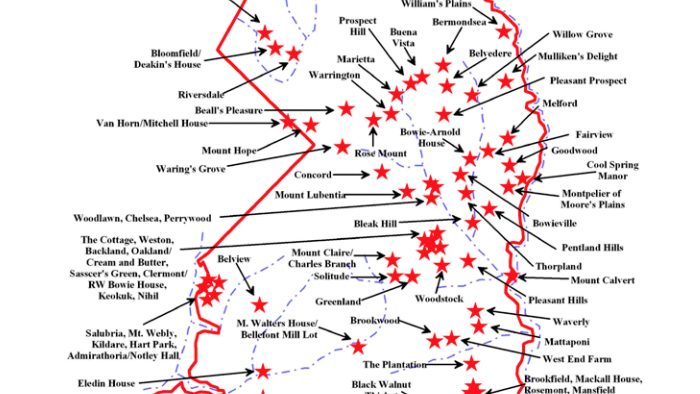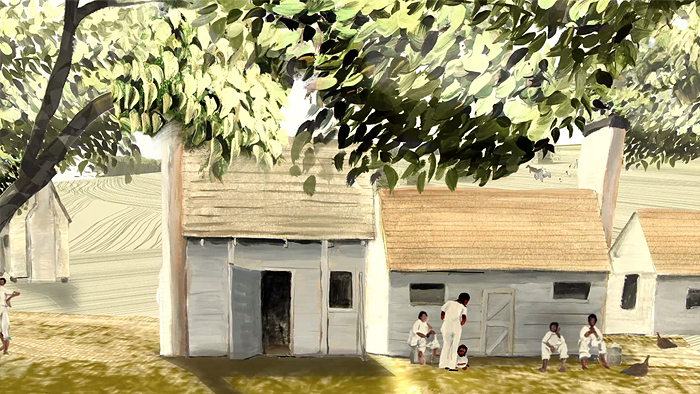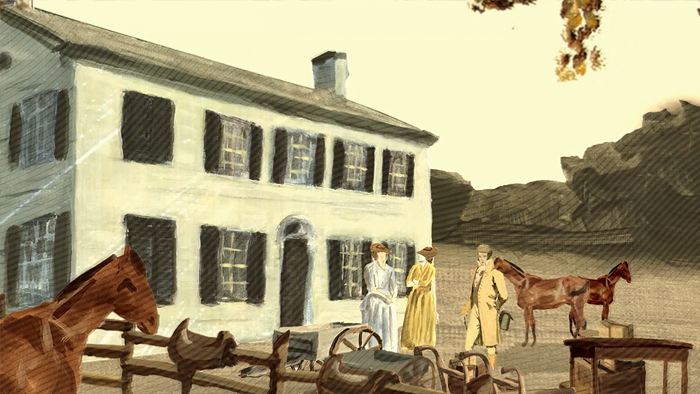The Plantation of the fictional Coleridge Family

Concept Art
Illustrating the fictional Coleridge Plantation posed two distinct problems: creating an environment that is recognizable as a plantation while avoiding the conventions often used in movies about slavery, and understanding what that environment looked like relative to the socio-economic conditions of the early 1800s.

Research
The animation team was able to create a realistic composite based on the descriptions of several Maryland plantations. The team drew heavily on the scholarship of William G. Thomas III and a document titled Antebellum Plantations in Prince George’s County, Maryland, which describes most of the plantations in the state in order of size.
The Maryland-National Capital Park and Planning Commission, Antebellum Plantations in Prince George’s County, Maryland (2009), 106.

Final Animation
The team chose an aerial view of the plantation that tracked down to enter Anna's world via the slave quarters of an average-sized Maryland plantation circa 1800.

Final Animation
The aerial view tracks down to the quarters of the enslaved inhabitants of the Coleridge Plantation.

Final Animation
There were a few brick Federal structures in Prince George's County, including Gabriel Duvall's Marietta, but we decided to portray Coleridge as a middling planter, one who perhaps aspired to but had not achieved the wealth necessary to construct a brick mansion. Instead, his dwelling, while still substantial, was a more modest wood frame house.